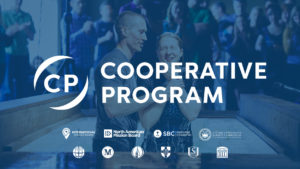
GLEN ALLEN, Va. (BP)–State Baptist conventions will be expected to handle more responsibilities with fewer resources if the Feb. 22 “progress report” is implemented — and some believe it will cause some state conventions to retain higher percentages of Cooperative Program missions money, leaders of one state convention has said in an open letter to the Great Commission Resurgence Task Force.
“The preliminary report of the GCR Task Force seemed to indicate that state conventions might be called upon to take on more responsibilities (e.g., CP promotion, adopting pioneer state conventions, etc.) with fewer resources (due to such factors as the possible elimination of cooperative agreements with the North American Mission Board),” said the letter from the Executive Committee of the Southern Baptist Conservatives of Virginia convention. “More than once, it was voiced that state conventions could simply retain more CP monies to enable them to shoulder these added responsibilities.
“The last thing we want to do is retain a higher percentage of CP resources,” the letter added.
In fact, many of the state Baptist conventions are raising the portion of receipts sent on to national and international missions causes, even though those receipts have been shrinking, which was e-mailed March 26 to task force chairman Ronnie Floyd by SBCV executive director Jeff Ginn.
“Two interesting trends are afoot in the SBC. The first is the well-known and much-lamented decline in percentage giving to the Cooperative Program by participating churches,” the letter said. “The second is the little-known and seldom-celebrated trend of state conventions raising the percentage of money forwarded for SBC causes. The first trend makes the second all the more remarkable.
“Just this past year, a dozen state conventions voted to raise the percentage forwarded to Nashville,” the letter added. “Several of these did so even though their own budgets were being reduced due, in part, to the limping economy.”
For example, the Utah-Idaho convention, which conducts its mission in a part of the country considered “pioneer” for Southern Baptists, increased its percentage this past year by 4.5 percent, the letter said. The SBCV, for its part, divides Cooperative Program receipts 50/50 between the state and SBC channels and voted to increase the portion going to national and international mission efforts by .25 percent each year for the next 10 years. The letter estimated that will result in an additional $1.2 million going to SBC causes.
The task force’s final report, which is scheduled to be released May 3 and will be considered during the SBC annual meeting June 15-16 in Orlando, Fla., would be strengthened if it acknowledged that many state conventions are giving more from a declining pool of resources, the letter suggested.
“What these contrasting trends highlight is that our state conventions have a heart to give more and retain less,” the letter said. “Their decisions to move in this direction have not been coerced. It is evidence of the desire of their respective messengers and staff to be a significant part of God’s worldwide mission.
“We believe that recognition of this positive trend among state convention partners would strengthen the final report of the GCR significantly,” the letter added. “An affirmation of this nature holds the promise of engendering goodwill and greater cooperation. As this picture of state conventions emerges, pastors and churches will find encouragement to entrust precious resources to the CP channel.”
Partnership, not turf wars, is what will move the Christian mission forward, the letter said.
“The heart of state partners is to give more so that the peoples of the world might come to the feet of Jesus,” the letter wrote. “Ongoing cooperation between partners such as NAMB and the state conventions is part of what will enable us to do this. It is imperative that we avoid fostering a turf mentality in which each entity endeavors to ‘cover its bases.’ Collaboration is the order of the day, not competition.”
The letter affirmed the sincere enthusiasm with which the task force is pursuing its assignment and the goal of bringing a final report all Southern Baptists can embrace.
“We are grateful to God for moving upon the hearts of Southern Baptists to look once again at how we can more faithfully do our part to fulfill the Great Commission. We have every confidence that you are pursuing your assigned duty ‘heartily, as to the Lord’ (Col. 3:23),” the letter said. “Furthermore, we hope and expect that the final report you will present to the Convention in Orlando will be one that Southern Baptists can corporately embrace. We know this is your hearts’ desire, and we share it fully.”
–30–
Compiled by Baptist Press assistant editor Mark Kelly.
The full text of the open letter follows:
An Open Letter from the Executive Committee of the
Southern Baptist Conservatives of Virginia to the
Great Commission Resurgence Task Force
March 24, 2010
Dear Dr. Floyd and members of the Great Commission Resurgence Task Force,
We are grateful to God for moving upon the hearts of Southern Baptists to look once again at how we can more faithfully do our part to fulfill the Great Commission. We have every confidence that you are pursuing your assigned duty “heartily, as to the Lord” (Col. 3:23). Furthermore, we hope and expect that the final report you will present to the Convention in Orlando will be one that Southern Baptists can corporately embrace. We know this is your hearts’ desire, and we share it fully.
Two interesting trends are afoot in the SBC. The first is the well-known and much-lamented decline in percentage giving to the Cooperative Program by participating churches. The second is the little-known and seldom-celebrated trend of state conventions raising the percentage of money forwarded for SBC causes. The first trend makes the second all the more remarkable.
Just this past year, a dozen state conventions voted to raise the percentage forwarded to Nashville. Several of these did so even though their own budgets were being reduced due, in part, to the limping economy. Which convention led the way? Utah-Idaho, one of our “pioneer” fields, did so with a 4.5% increase. It is reminiscent of the churches in Macedonia who, out of their poverty, gave generously.
What these contrasting trends highlight is that our state conventions have a heart to give more and retain less. Their decisions to move in this direction have not been coerced. It is evidence of the desire of their respective messengers and staff to be a significant part of God’s worldwide mission.
In the case of our own state convention, we have had the long-established practice of investing CP dollars 50/50 between state and SBC channels. Though some would see this as an acceptable allocation, we voted to increase the portion going to national and international mission efforts by .25% each year for the next decade. Current estimates are that this will result in an additional $1.2 million going to SBC causes.
We believe that recognition of this positive trend among state convention partners would strengthen the final report of the GCR significantly. An affirmation of this nature holds the promise of engendering goodwill and greater cooperation. As this picture of state conventions emerges, pastors and churches will find encouragement to entrust precious resources to the CP channel.
The preliminary report of the GCR Task Force seemed to indicate that state conventions might be called upon to take on more responsibilities (e.g., CP promotion, adopting pioneer state conventions, etc.) with fewer resources (due to such factors as the possible elimination of cooperative agreements with the North American Mission Board). More than once, it was voiced that state conventions could simply retain more CP monies to enable them to shoulder these added responsibilities.
The last thing we want to do is retain a higher percentage of CP resources. To the contrary, as is evidenced by the earlier trend lines, the heart of state partners is to give more so that the peoples of the world might come to the feet of Jesus. Ongoing cooperation between partners such as NAMB and the state conventions is part of what will enable us to do this. It is imperative that we avoid fostering a turf mentality in which each entity endeavors to “cover its bases.” Collaboration is the order of the day, not competition.
From its headwaters, the Colorado River becomes a mighty force as major tributaries such as the Gunnison, the San Juan, and the Green rivers feed it. As it courses through several arid states, innumerable users siphon off the precious water. The result is that the once-powerful, life-giving Colorado peters out before it ever reaches the ocean. It ends just inside the Mexican border, sixty kilometers from the sea. Wetlands and wildlife that once thrived on its delta have vanished, replaced by barren mudflats. May God grant that the believers, churches, and entities that comprise Southern Baptist life be vibrant tributaries that unite to facilitate the life-giving flow of the Gospel beyond all borders!
Rest assured that you and the entire GCRTF are in our prayers. We thank God for your labor of love and pray His wisdom will guide your every proposal.
















